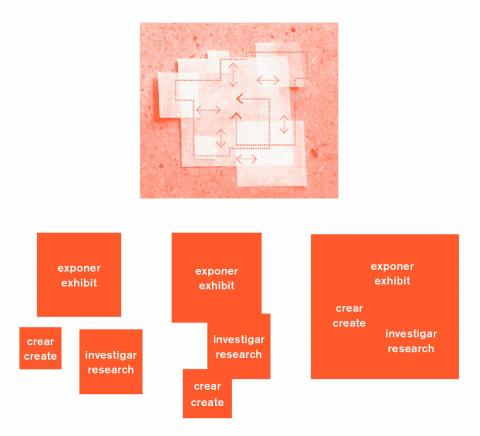What distinguishes us from other art institutions?
The context
Starting from the fact that Collegium is a contemporary art platform -focused on the cultural creation of the 21st century-, we are clear about the elements that differentiate us from other art institutions in the world.The first variable is the host context itself. Arévalo is a city that, due to its history and geographical position, carries many meanings and values: globality, diversity, knowledge and tradition. Multiculturalism has been one of its most relevant signs: Muslims, Christians and Sephardic Jews, Queen Isabella I of Castile and Saint Ignatius of Loyola promoted a universal change that had enormous consequences.
Another valuable element is that it is an area with strong roots in craft workshops and popular culture. Castilla y León is one of the regions that has most preserved its traditions, arts and crafts.
Finally, the museum is nestled in the muscle of a Jesuit school. This information and cultural weight makes Collegium a unique site, since it embodies, more rightfully than any other place in the world, the value of diversity and education.
A new concept and a different perspective
Unlike the traditional museum model, imposed in the mid-16th century and which unfortunately persists to this day, our project strives to see itself as a living organism dependent on the diachronic relationship between each of its parts. Curatorial work, workshops, discussion forums and residencies will not be disconnected from the exhibition process, but will coexist in the same scenario.
In traditional museums, programs are zoned and their activities are unlinked and differentiated in silos, thus distorting the idea of a living and resilient organism. The main function of these centers is the exhibition of artistic objects, often over-curated. This is in itself exclusionary by definition and by inheritance. Pierre Bourdieu, French sociologist "even in their smallest details, museums reveal their true function, which is to reinforce among some people the feeling of belonging and among others the feeling of exclusion".
We know that today's art, given its narrative, symbolic and also morphological complexity, does not reach its greatest capacity for expression in this environment, since the box determines the content and often that same box strangles the conceptual and discursive polyvalence of the work of art.
In the museum of the 21st century, the main activities are articulated around a unitary approach and from a holistic and interactive perspective. Creation, research and exhibition are fundamental and equally relevant when it comes to conceiving and implementing a program. All processes take place in a space without physical or programmatic boundaries. This new distribution seeks, on the one hand, a more recreational and intuitive approach between emotional knowledge and the work of art, and on the other hand, to place the individual at the epicenter to try to eliminate any feeling of exclusion, and allow sensitive interaction, as a dialogue, between the work of art and its user.

Architecture for an avant-garde museum
We have conceived the architecture according to the above premises. The museum building is designed in a way that conditions the experience to be interactive and intuitive. It serves and frames the artwork in a way that enhances its interpretation, and generates contrasts to understand the virtues of the museum, from its own design.
Exhibition Views
Collegium uses cookies to offer the best possible website experience. They are used to ensure the operation of the site or to collect anonymous statistics. Please select the categories you want to allow. Further information can be found in our data protection information.